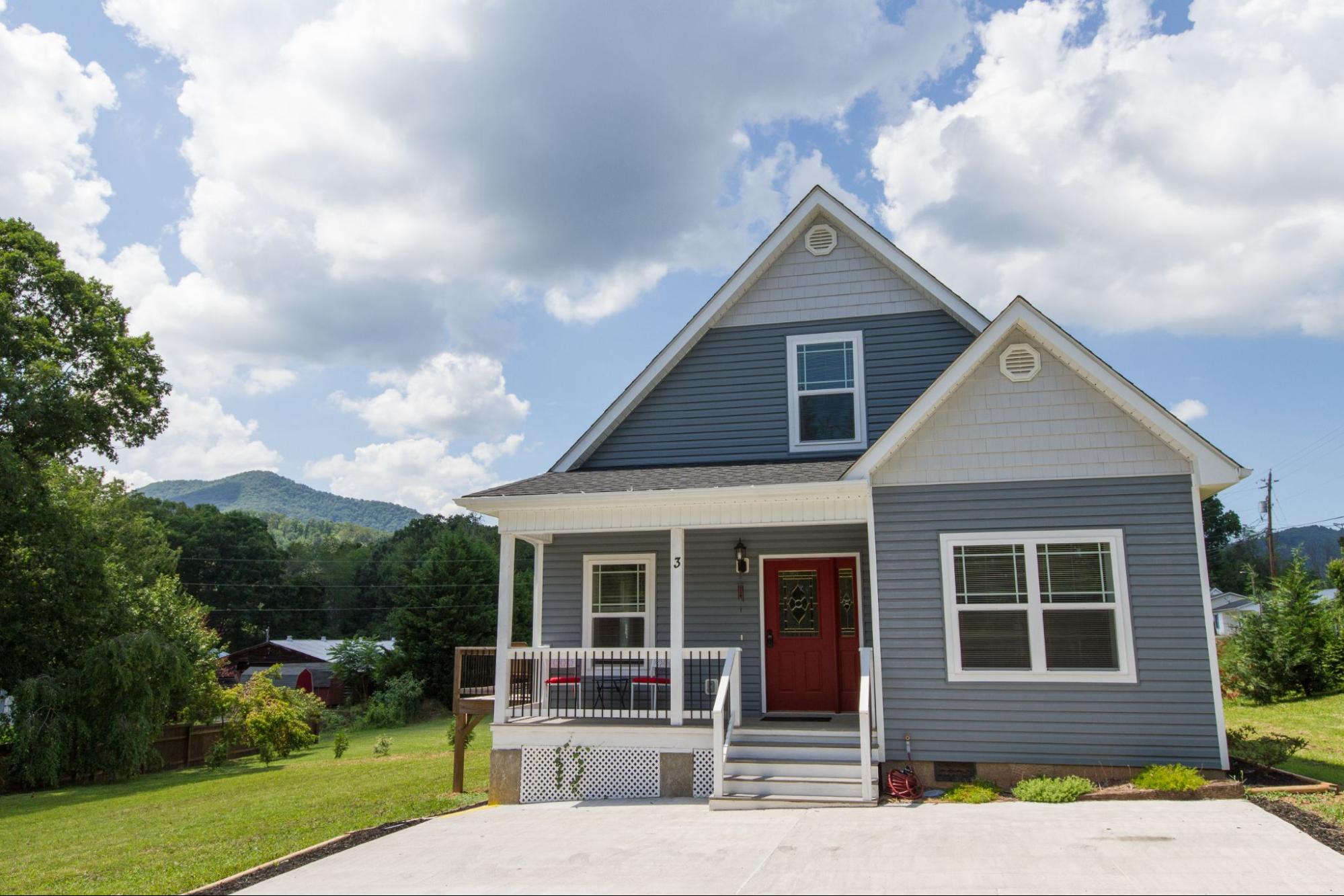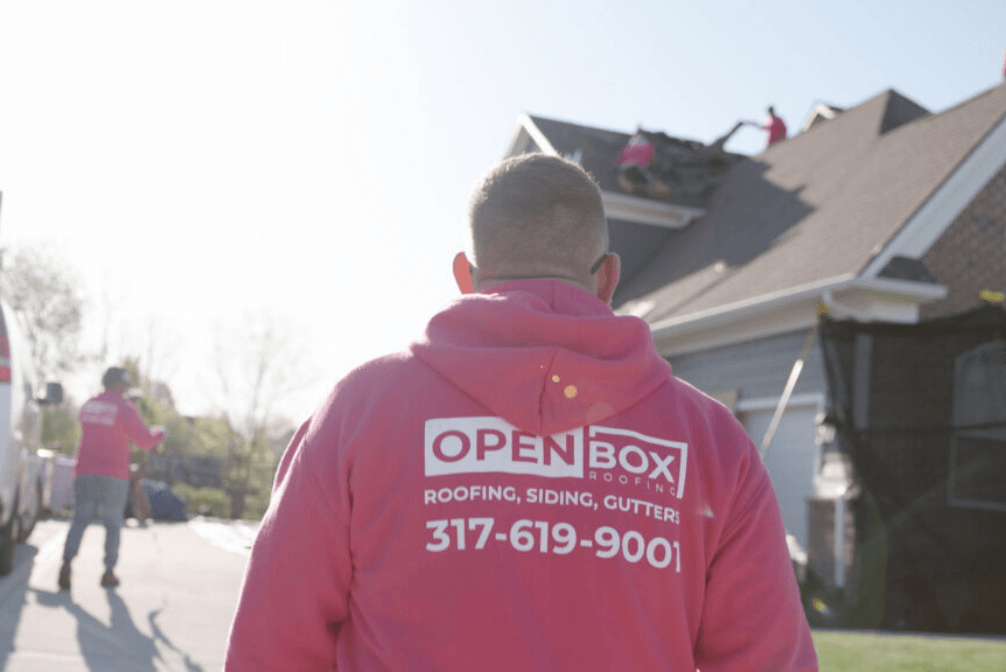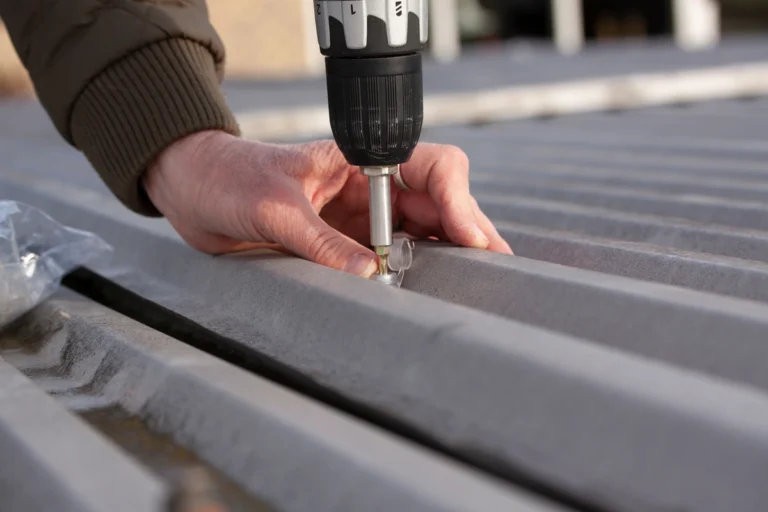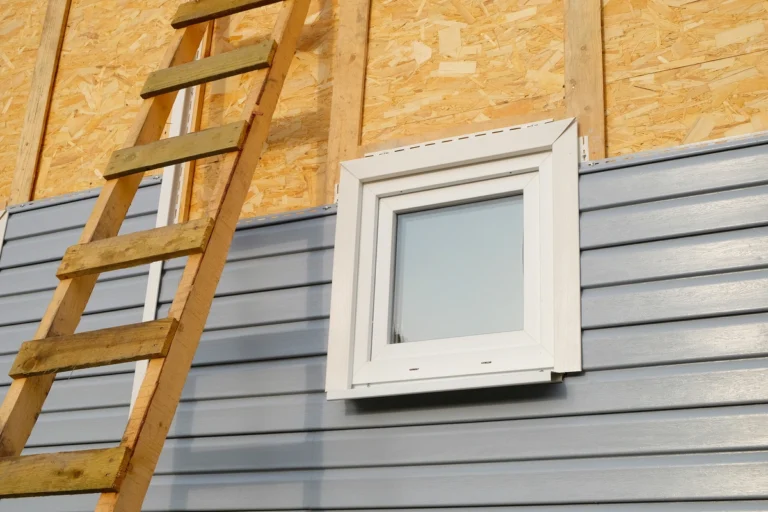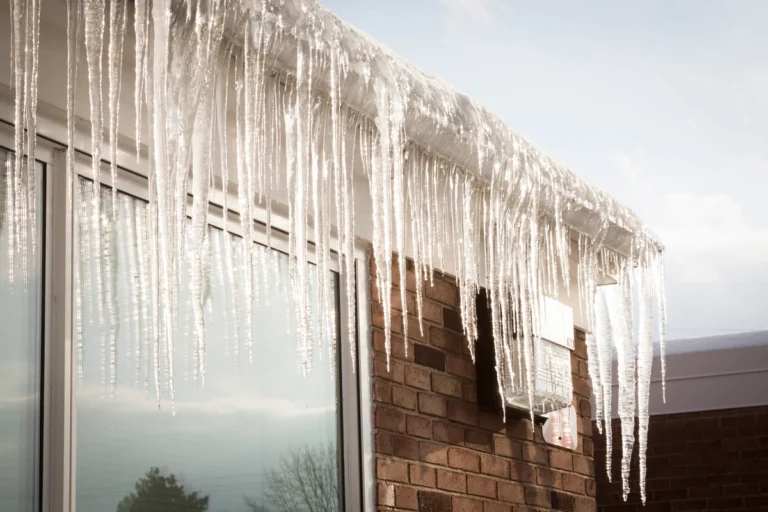Siding plays a crucial role in protecting your home from the elements while also enhancing its aesthetic appeal. Over time, however, siding can deteriorate, leading to various issues such as decreased energy efficiency and compromised structural integrity.
Siding replacement is a significant investment but one that can significantly improve your home’s value, curb appeal, and energy efficiency. In this comprehensive guide, we’ll explore everything you need to know about siding replacement, including:
- Signs that indicate it’s time for an upgrade to
- Questions to ask your contractor before starting the project
- How to make a budget
- Steps in the replacement process
Signs That You Need Siding Replacement
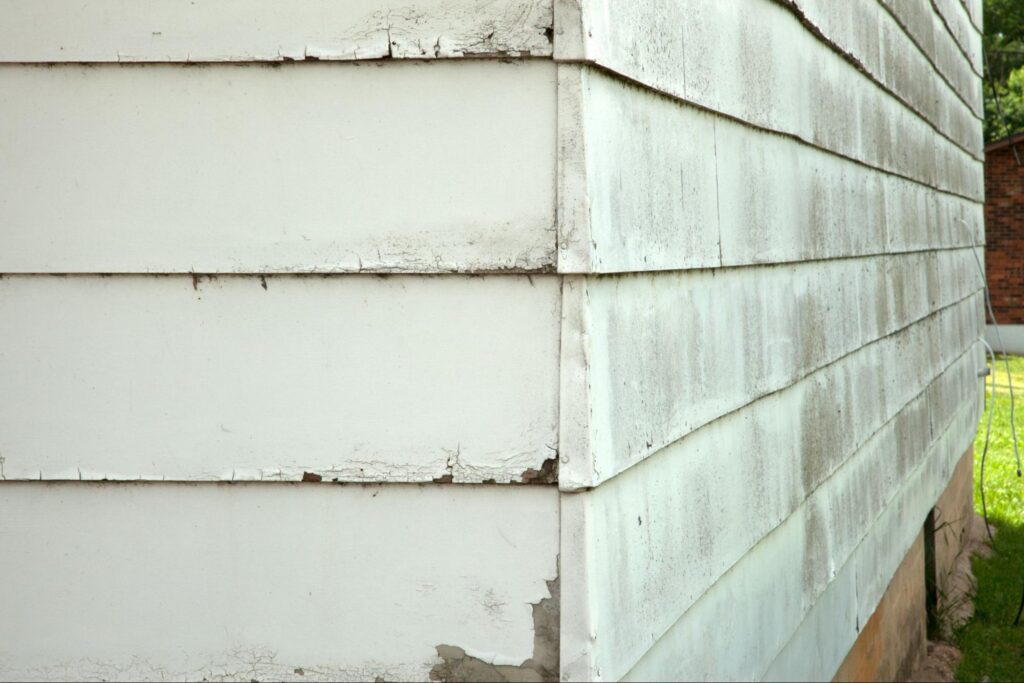
Noticing these signs in your home’s exterior? It may be time for a siding replacement.
- Visible Damage: Cracks, warping, or rotting are clear signs that your siding needs attention. These issues compromise the siding’s ability to protect your home from moisture and can lead to further damage if left unaddressed.
- Increased Energy Bills: If you notice a spike in your energy bills, it could be due to inefficient siding allowing heat or cool air to escape from your home.
- Mold or Mildew Growth: Mold and mildew thrive in moist environments, and damaged siding can provide the perfect breeding ground. If you spot mold or mildew on your siding, it’s time for a replacement.
- Faded or Peeling Paint: Peeling or faded paint is not just an aesthetic issue; it’s also a sign that your siding is no longer adequately protecting your home.
- Warping or Buckling: Siding that is visibly warped or buckling is likely past its prime and needs to be replaced before it causes further damage.
Things to Consider When Replacing Your Siding
Replacing siding is a huge undertaking. Before you contact a contractor, it’s a good idea to do some research into the following:
- Material: There are various siding materials available, including vinyl, wood, fiber cement, and metal. Each has its pros and cons in terms of durability, maintenance, and aesthetics.
- Style: Consider the architectural style of your home and choose siding that complements its design. Whether you prefer a traditional look or a more modern aesthetic, there’s a siding style to suit your preferences.
- Climate: Take your climate into account when selecting siding materials. For example, in areas with high humidity or frequent rain, moisture-resistant materials like vinyl or fiber cement may be more suitable.
- Budget: Determine your budget for the project, including the cost of materials, labor, and any additional expenses such as permits or repairs.
10 Steps in the Siding Replacement Process
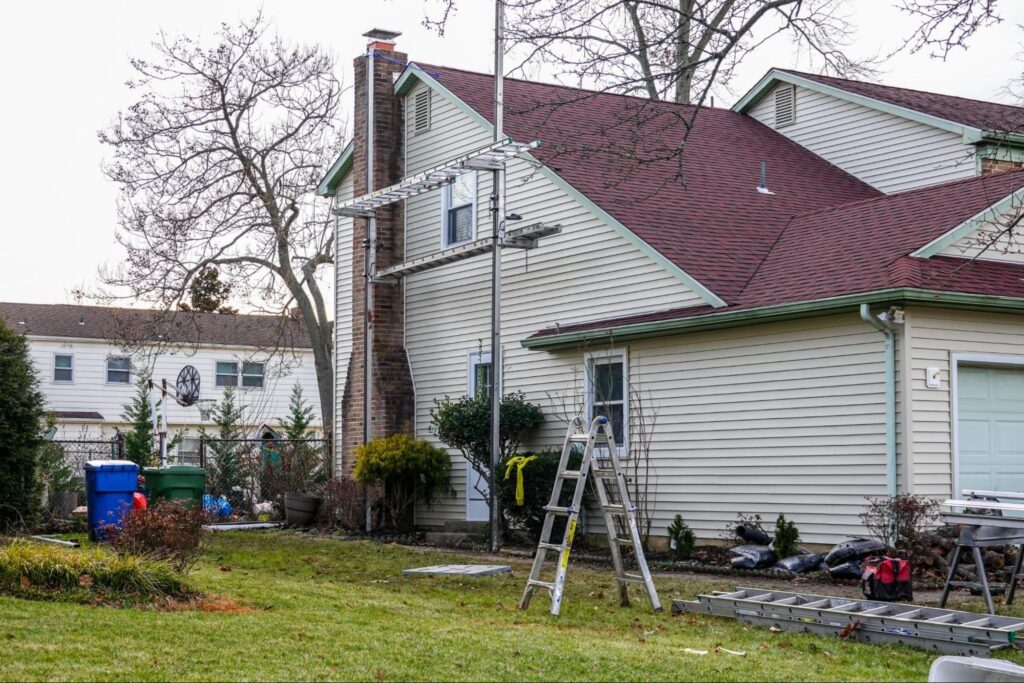
Replacing your home’s siding involves a series of steps to ensure a smooth and successful project. Here’s an overview of what to expect during the siding replacement process:
1) Initial Inspection:
The first step is to conduct a thorough inspection of your existing siding to assess its condition and identify any underlying issues that need to be addressed. This includes checking for signs of damage, rot, mold, or structural problems.
2) Selecting Materials:
Once the inspection is complete, you’ll need to choose the type of siding material you want to use for your replacement. Consider factors such as durability, maintenance requirements, aesthetics, and budget when making your selection.
3) Preparing the Site:
Before installation can begin, the area around your home will need to be prepared. This may involve removing any obstacles or landscaping features that could interfere with the siding installation process.
4) Removing Old Siding:
The next step is to remove the existing siding from your home. Depending on the type of siding and its condition, this may require careful dismantling or outright removal. Special care will be taken to avoid damaging the underlying structure or insulation.
5) Repairing Substrate:
With the old siding removed, any damaged or deteriorated substrate will need to be repaired or replaced. This may involve patching holes, replacing rotted wood, or reinforcing the framing as needed to ensure a solid foundation for the new siding.
6) Installing Moisture Barrier:
Before installing the new siding, a moisture barrier or house wrap will be applied to the exterior walls. This helps prevent water infiltration and moisture buildup, which can lead to mold, rot, and other issues.
7) Siding Installation:
With the preparation work complete, the new siding can be installed according to the manufacturer’s instructions. This involves carefully fitting each piece of siding into place, securing it to the wall, and ensuring proper alignment and spacing.
8) Sealing and Flashing:
To ensure a watertight seal and protect against moisture intrusion, special attention will be given to sealing joints, corners, and around windows and doors. Flashing may also be installed to redirect water away from vulnerable areas.
9) Finishing Touches:
Once the siding is installed, any necessary finishing touches will be made, such as installing trim, caulking seams, and painting or staining the siding as desired.
10) Final Inspection:
Before considering the project complete, a final inspection will be conducted to ensure that the siding has been installed correctly and meets quality standards. Any remaining issues will be addressed before the project is officially completed.
By following these steps and working with experienced professionals, you can ensure a successful siding replacement project that enhances the beauty, durability, and energy efficiency of your home for years to come.
How to Make a Budget for Your Siding Replacement
Planning a budget in advance can help alleviate stress. Here are a few tips:
- Research Costs: Research the average costs of siding materials and installation in your area to get an idea of how much you can expect to spend.
- Get Multiple Quotes: Obtain quotes from several reputable contractors to compare prices and services.
- Factor in Additional Costs: Don’t forget to budget for any additional expenses such as permits, repairs, or upgrades.
- Consider Long-Term Savings: While high-quality siding may have a higher upfront cost, it can save you money in the long run by increasing energy efficiency and reducing maintenance expenses.
Different Siding Options
Choosing your siding material is a hugely important decision. Below, we’ve compiled some of the most popular options:
Vinyl Siding:
Vinyl siding is affordable, low-maintenance, and available in a wide range of colors and styles. It’s resistant to rot, insects, and fading, making it a popular choice for homeowners.
Wood Siding:
Wood siding offers a natural, timeless look and can be painted or stained to match your preferences. However, it requires more maintenance than other materials and is susceptible to rot and insect damage.
Fiber Cement Siding:
Fiber cement siding is durable, fire-resistant, and available in various textures that mimic the look of wood or stucco. It’s low-maintenance and resistant to rot, insects, and extreme weather conditions.
Metal Siding:
Metal siding, such as aluminum or steel, is durable, fire-resistant, and requires minimal maintenance. It’s available in a range of finishes and can give your home a sleek, modern look.
How New Siding Adds Value to Your Home
Sure, adding new siding can be expensive. But it can add value to your home, in the long run.
- Improved Curb Appeal: New siding can instantly enhance your home’s curb appeal, making it more attractive to potential buyers.
- Increased Energy Efficiency: High-quality siding with proper insulation can improve your home’s energy efficiency, leading to lower heating and cooling costs.
- Enhanced Protection: New siding provides better protection against moisture, pests, and other environmental elements, preserving the integrity of your home’s structure.
- Higher Resale Value: Investing in new siding can increase your home’s resale value, allowing you to recoup a significant portion of your investment when selling.
How Siding Improves Your Energy Efficiency
Still nervous about the cost? A quality siding installation can actually save money, by making your home more energy efficient.
- Insulation: Siding with built-in insulation or added insulation during installation helps regulate indoor temperatures, reducing the need for heating and cooling.
- Air Sealing: Properly installed siding creates a tight seal around your home, preventing drafts and air leakage that can contribute to energy loss.
- Reflective Properties: Some siding materials, such as light-colored vinyl or metal, have reflective properties that help deflect heat from the sun, keeping your home cooler in the summer.
- Moisture Control: Moisture-resistant siding prevents water infiltration, which can lead to mold growth and structural damage. By keeping moisture out, siding contributes to a healthier indoor environment and prevents energy loss due to dampness.
Questions to Ask Your Contractor Before Your Siding Replacement
Your contractor can make or break your siding installation. Here are some questions you should ask to ensure a smooth installation process.
Are You Licensed and Insured?
Ensure that your contractor is licensed to perform the work in your area and has adequate insurance coverage to protect you against liability.
What Experience Do You Have?
Ask about the contractor’s experience with siding replacement and any certifications or training they have in the field.
Can You Provide References?
Request references from past clients and follow up to get feedback on their experience working with the contractor.
What is the Timeline for the Project?
Get a clear timeline for the project, including start and completion dates, to ensure it fits your schedule.
What is the Warranty Coverage?
Inquire about the warranty coverage for both materials and labor to understand what is included and for how long.
How Will You Handle Permits and Inspections?
Make sure the contractor will obtain any necessary permits and arrange for inspections as required by local building codes.
What is the Payment Schedule?
Clarify the payment schedule and make sure it aligns with the progress of the project, with a portion of the payment withheld until the work is completed to your satisfaction.
Get The Facts You Need
Siding replacement is a significant investment in your home’s appearance, durability, and energy efficiency. By paying attention to signs that indicate your siding needs attention, carefully considering your options, and working with a reputable contractor, you can ensure a successful siding replacement project that enhances your home’s value and comfort for years to come. Whether you opt for vinyl, wood, fiber cement, or metal siding, the benefits of a fresh exterior are undeniable, making it a worthwhile investment for any homeowner.
Got questions? Contact Open Box Roofing to get the answers you deserve.
